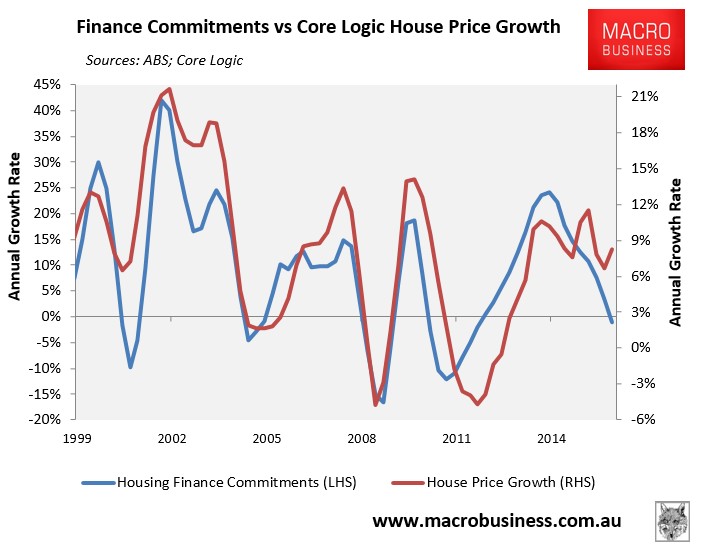That’s what Stockland chief executive Mark Steinert, expects:
…at least in Sydney, Melbourne and Brisbane…It will not be the unsustainable double digit growth of the last three years. In the past “frenetic” year the average price per square metre of a Stockland lot in Sydney jumped 40 per cent.
But the price growth, though moderate, will be a better than many expect, 3-4 per cent a year for the next three years, based just on inflation and population growth.
But house price growth slowing, and housing commencements are peaking?
“They are all good things if you want to avoid a bust,” he says.
Mr Steinert has three key metrics for the health of housing; supply, employment and interest rates.
“it would take a lot of overbuilding, or a collapse in the economy, or a rise in interest rates, to turn this market,” he said.
“Normally they all happen together, but I cannot see that happening in the next five years.
No, Mark, they will not. And I can’t say whether prices will keep rising in the east as result. I doubt it for Sydney where my base case remains a rerun of the 2003 bust that flat-lines prices as outer burbs fall and stall the move up ladder into inner burbs. It’s hard to believe Melbourne and Brisbane can charge ahead if Sydney isn’t.
The great unknown in this is how influential Chinese cash buyers are in the market. They’ve slowed but with doubts over the efficacy and commitment of the new foreign buyer policing regime they remain an unknown. For instance credit has recently fallen much more quickly than prices in recent times (at least in CoreLogic indexes), something that has no precedent:

Other indexes are suggesting a much deeper price slowdown.
Returning to Steinert’s triple whammy. Overbuilding is happening and population growth is slowing so that will weigh on prices but more in the north and west than the east, for now. Interest rates will keep falling so that’ll be a support. The economy will remain under pressure but likely not fall apart with building fiscal support, at least without another external shock. So none of Steinert’s preconditions for falling prices will be met in the south east.
My base case at this point then is for stalling markets in the east that slowly bleed confidence and falling markets everywhere else. This will be enough to exhaust the last of Australia’s monetary firepower, and fiscal will be drained as well, leaving housing very vulnerable come the next external shock. Given we don’t know when that comes, but it is more likely than not in the next three years, the risk-adjusted return on housing pushes the case to sell now, at least for those that consider property an investment.

